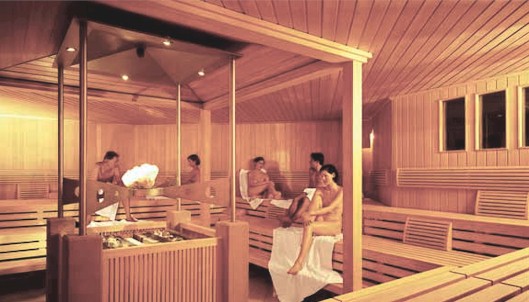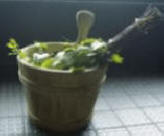Sauna

According to the website of the Finnish Sauna Society,
The very oldest saunas were probably only pits dug in a slope in the ground and primarily used as dwellings in winter. There was a fireplace and stones were heated in fire until they were hot. Then water was thrown over them to produce steam and to give a sensation of more heat. This would raise the temperature so high that people could take off their clothes. The word sauna is an ancient Finnish word and its etymology is not clear but it may have originally meant a winter dwelling of this kind.
 Whereas the Russian bath uses steam to ensure that bathers sweat, and the Victorian Turkish bath uses dry heat, sauna uses both approaches. At the start, the heat is relatively dry. Then, as water is added to the source of heat (usually stones), the atmosphere becomes very humid for a while until the cycle is started again.
Whereas the Russian bath uses steam to ensure that bathers sweat, and the Victorian Turkish bath uses dry heat, sauna uses both approaches. At the start, the heat is relatively dry. Then, as water is added to the source of heat (usually stones), the atmosphere becomes very humid for a while until the cycle is started again.
Finns in the sauna, like Russians in the bania, use a bundle of leaves to whisk themselves to stimulate the skin. The Finnish vihta is made of leafy birch twigs.
